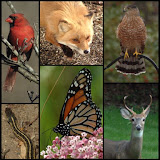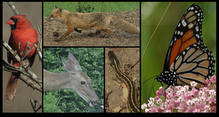House Wren Eggs Hatch
Earlier this spring, I posted several photos (see chickadee, then scroll down) of the Carolina Chickadee young in the bird box. I also posted that another bird had taken over the bird box after the chickadee young had departed and I had cleaned out the nest. Even with a distinct nest structure, this bird was unidentified. Additionally, as the nest was built completely to the inside top of the box, I was never able to see a parent on the nest when I opened the box.Yesterday (July 28), I decided that, as I had never in my life seen young still in the nest during the last week of July, it was safe to clean out pile of twigs deposited in the box in preparation of next year. What a surprise I had! When I pulled out the nest, I found three new hatchlings and one unhatched egg.
All three of the hatchlings were alive, moving, and raised their heads for 2-3 seconds. Each were dry with only wisps of down. Acting quickly, I photographed (what’s another 3 minutes) the new hatchlings, rebuilt the nest in the box, and prayed that a parent would return.
Within a few minutes of rebuilding the nest (to extract the nest from the box I actually had to pull the nest apart and out in three sections – I rebuilt the nest in reverse order), the mother returned and entered the box (see the fourth photo). She has returned several times today as well.
I spent several hours on the Web looking for a nest with a similar structure. I found one site that nailed the nest and the bird down as the house wren. Another site also described the house wren as a not so friendly bird that will evict our bird’s eggs and hatchlings, and then build over the existing nest. Basically, the male builds the nest of twigs and then attracts a female that completes the nest lining of feathers, lays and incubates the eggs, then raises the young.
I went back to photos from about 20 days ago and found these photos of a house wren singing on top of the bird box and perching in a tree. At the time, I did not identify this bird as a house wren.

The new hatchlings will fledge in 15-17 days. I hope to get some additional photos then, as I certainly will not distribute the next again.









